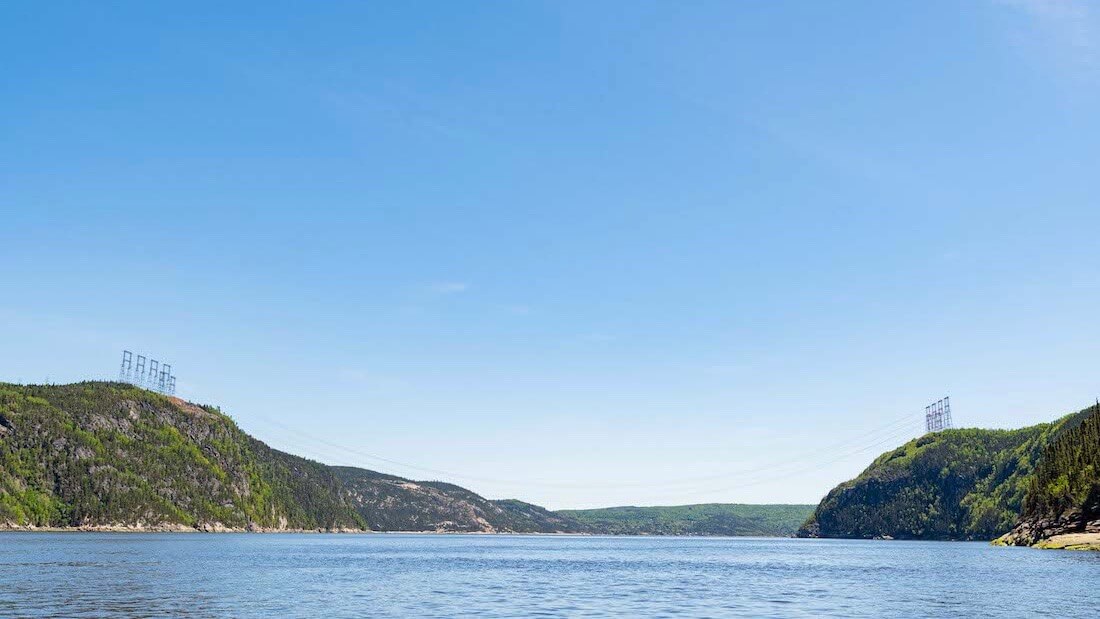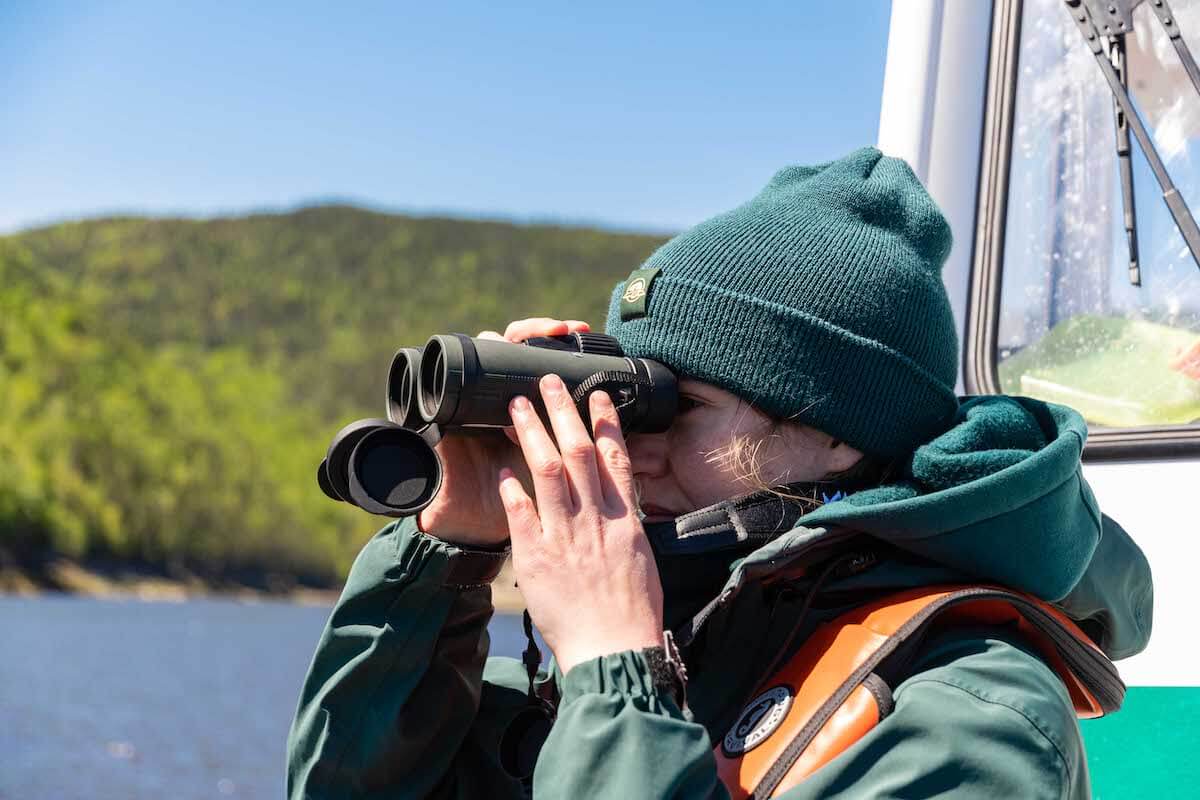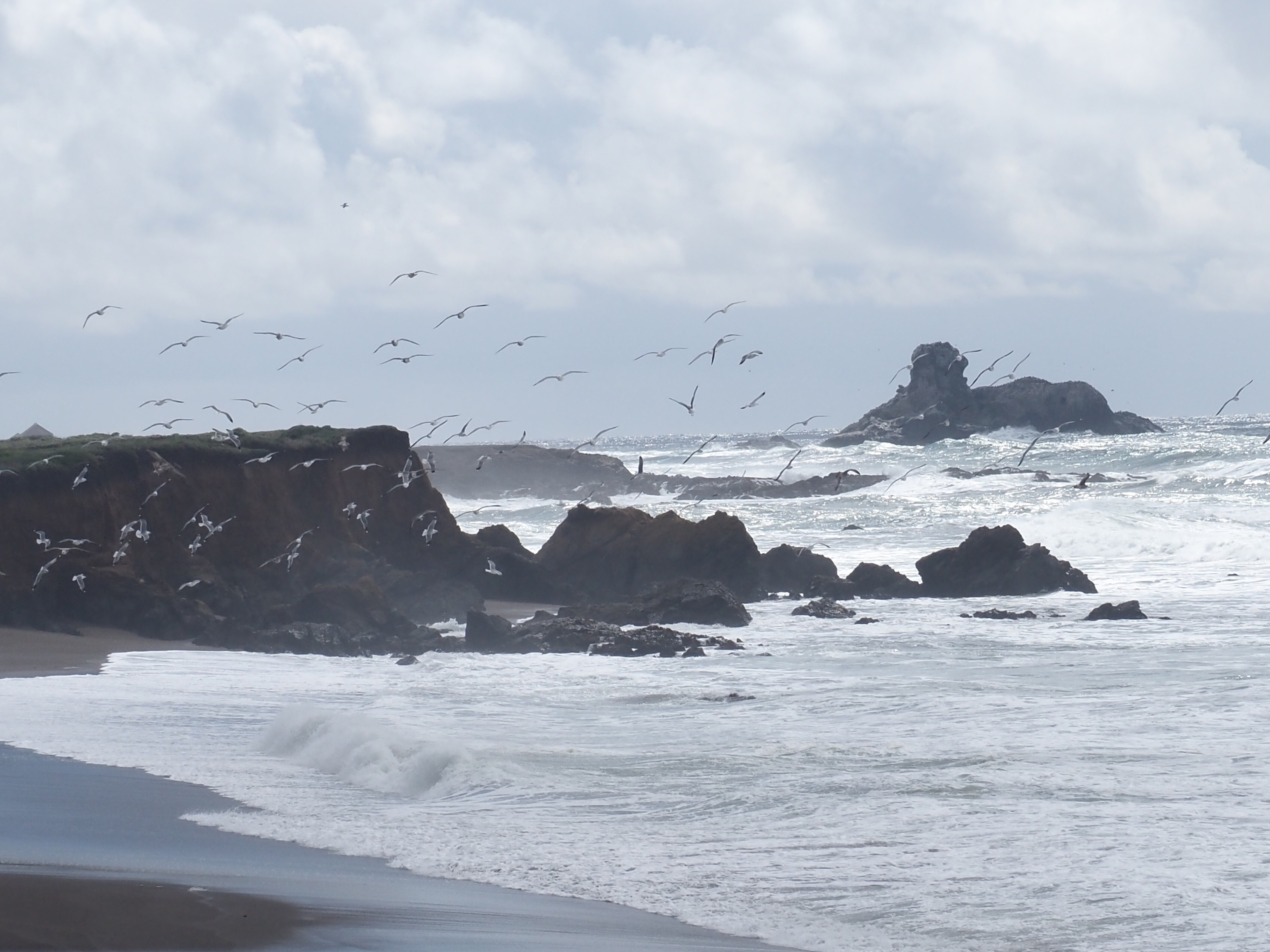The arrival of spring is synonymous with change. The days are getting longer, multiple species of whales are returning to the St. Lawrence Estuary, and the Parks Canada conservation team at the Saguenay-St. Lawrence Marine Park is kicking off a new field season!
With the start of the season comes the first day on the water. We start our day by loading up our zodiac, L’Estran, with our scientific equipment that includes a camera, a pair of binoculars and a clipboard with our field sheets. For more than four hours, we will be patrolling the shores of the Saguenay Fjord. This time, we’re not looking for belugas, but another marine mammal species that resides in the marine park year-round: the harbour seal.
According to our survey data from 2016 to 2020, the average number of harbour seals in the fjord is 69, and this figure is trending upward. The maximum annual abundance of seals and their distribution are among the indicators we use to define the health of the Saguenay Fjord. Sampling has been carried out in collaboration with Sépaq since 2007. The Parks Canada team is responsible for the north and south shores of the fjord between Tadoussac and L’Anse-Saint-Jean, while Sépaq park wardens cover from L‘Anse-Saint-Jean to Sainte-Rose-du-Nord.
Once the boat is loaded and the safety checks completed, we are ready to start our day on the water. With me are Simon, the captain, and Sarah, a resource management officer. While waiting for the monitoring to start, I begin to fill out the data sheets, including the date, time of low tide and weather conditions.
I look at my watch: it’s 12:26. Low tide is at 14:29 today and we need to start our monitoring effort two hours before that. We’re right on time! Low tide is an important resting time for harbour seals. They take advantage of the receding waters to climb up onto the rocks along the Saguenay. It’s also pupping season, when females give birth to their young and nurse them on shore.
Off we go! Simon signals to me that we are at the start of the transect, meaning the beginning of our journey throughout which we will be collecting data.
I pay close attention to oddly-shaped rocks to make sure they aren’t well-camouflaged pinnipeds! We arrive at Cap de la Boule, a well-known haulout in the fjord, and sure enough, I can see seals basking in the sun! I ask Simon to slow down. My teammate Sarah starts snapping pictures while I count the number of individuals. The photos are used to validate our counts later at the office, because we sometimes overlook seals that are well hidden between and behind the rocks! I tally a total of six individuals: one in the water and five on the rocks. We also take note of the number of adults and pups, the term used for young seals. I’m surprised to see that there are two pups amongst the adults! This time of year, it’s easy to tell them apart from adults, as they are much smaller. I also note the time and coordinates of the sighting. Once all the information has been collected, we continue our monitoring. Harbour seals are easily disturbed by human presence, so we try to spend as little time as possible near them, maintain a good distance and avoid making any changes in speed.
Fifteen minutes later, Sarah spots more seals on the shore. We slow down and resume our note- and photo-taking. I count four adults when Sarah draws my attention to something quite remarkable: a female hiding a newborn behind her on the rocks! The pup is probably less than an hour old, as it’s still wet and pieces of placenta can be seen nearby. We quickly finish our count and immediately leave the premises in order to afford them all the peace and quiet necessary for these first moments of life.
Our monitoring comes to an end at 16:34. We have a daily total of 18 harbour seals, which is not so high compared to other days. Perhaps the seals are farther upstream. I write to the Sépaq team to find out what their result for the day was. They tallied 150 individuals! This gives us a total count of 168 individuals. This is the highest tally in the history of this monitoring.
A record day… What a great way to kick off the field season! And hopefully a precursor for what’s to come the remainder of the season.







